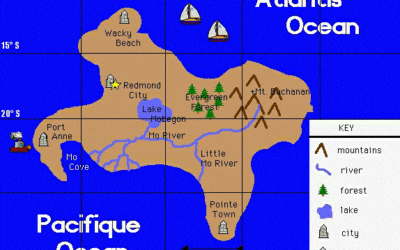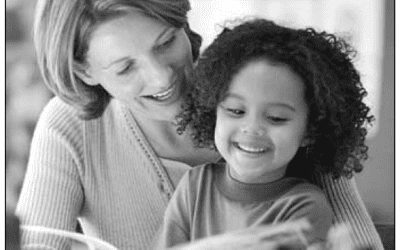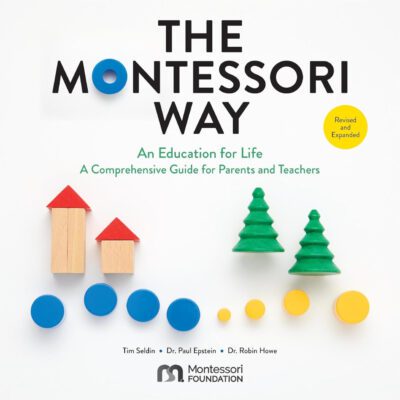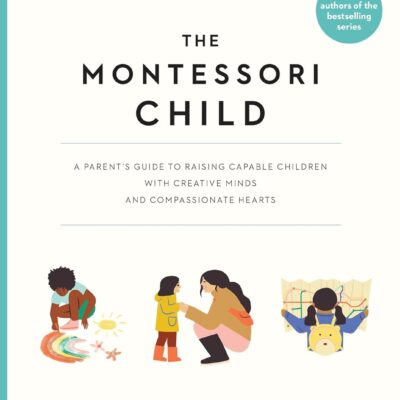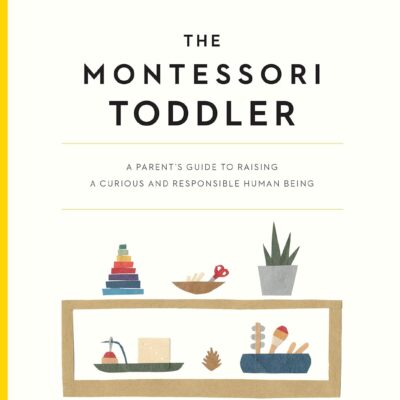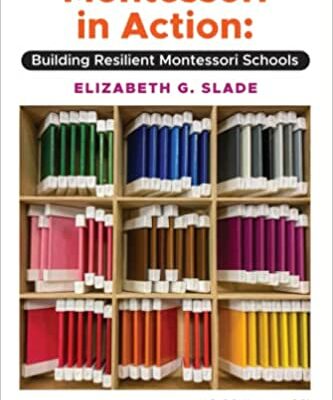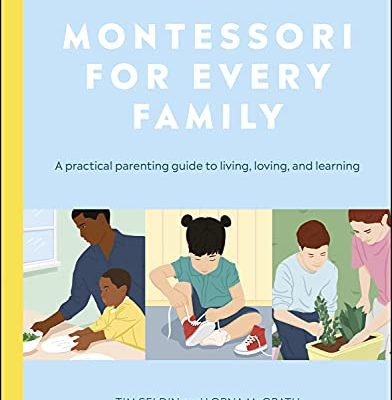
By Amanda Riccetti
A Gentle Welcome to Independence, Discovery, and Avery’s First Day
You’ve enrolled your child in a Montessori school. Perhaps a trusted friend recommended it. Maybe you were a Montessori child yourself. Or perhaps the calm beauty of the classroom simply spoke to you during your visit, resonating on a level you couldn’t quite name.
Whatever path led you here, your child is about to begin a new chapter of growth—and you’ll be walking alongside them into something extraordinary: the Montessori Primary years, spanning ages three to six.
This isn’t preschool or kindergarten in the traditional sense. It’s what Montessori calls a Three-Year Journey—a formative period of development where your child learns by doing, observing, and discovering at their own pace, guided by an intentionally prepared and beautiful environment.
As this journey begins, it’s natural to feel a mix of wonder and uncertainty. Your child will be stepping into a space designed for them—a classroom that nurtures independence while offering structure, beauty, and purpose. And while the materials are thoughtfully arranged and the guides warmly prepared, your presence—the emotional grounding you offer at home—remains an essential part of the experience. Together, we can help your child feel safe, curious, and ready to begin.
Supporting Your Child’s Transition
Entering a Montessori classroom is like embarking on a beautiful adventure. Here’s how you can support this transition:
- Speak Positively: Frame the start of school with enthusiasm and curiosity.
- Visit if Possible: Help your child picture the space and meet familiar faces.
- Respect the Process: Allow time for nesting—a valid stage where children observe, breathe, and acclimate before choosing work.
- Trust the Journey: Know that even quiet observers are learning and preparing to engage.
Once your child walks through the door, they’ll step into an environment prepared just for them. The Montessori classroom isn’t just a room full of materials—it’s a living, breathing space designed to meet children where they are developmentally, emotionally, and socially. Understanding what your child will encounter inside helps you support their journey even more deeply. So what will they see when they arrive?
Inside the Montessori Classroom
Practical Life: Learning Through Living
Practical Life is the heart of the Montessori classroom. Activities like pouring, sponging, sweeping, and table-washing build both gross and fine motor skills while teaching grace, order, and courtesy.
These exercises fall into four core categories:
- Care of Self
- Care of the Environment
- Grace and Courtesy
- Control of Movement
Children experience the rhythm of each task—beginning, middle, and end—developing sequencing skills, independence, and real-world competence in a peaceful, purposeful way.
Sensorial: Refining the Senses, Awakening the Mind
Sensorial materials are uniquely Montessori—crafted to engage the five senses and refine perception. Children classify objects by shape, color, sound, and texture, learning vocabulary such as rough/smooth, short/tall, and even geometric expressions like triangular prism and quatrefoil.
This work builds the cognitive architecture for literacy and math by nurturing observation, comparison, and joyful repetition.
Cultural: Exploring the Wonders of Our World
Dr. Montessori believed a cultured person understands the natural world and human expression. In this area, children explore:
- Geography
- Botany & Zoology
- Science
- Music & Art
These activities foster wonder, broaden perspective, and help children see themselves as part of a respectful, interconnected world.
Language & Math: The Power of Words and Numbers
Language begins with phonetic awareness—children learn how words are constructed from sounds, then joyfully decode and read at their own pace. Vocabulary flourishes through conversation and work, while writing emerges organically through the use of drawing with metal insets and storytelling.
Math is introduced through tactile materials—golden beads, number rods, and precise tools that turn abstract concepts into something concrete. Children discover that math is a language they already speak.
The Montessori Environment: A World Prepared for the Child
The classroom is designed to meet children’s developmental needs with beauty and clarity. Materials are arranged on low shelves for easy access. Each item teaches a lesson and is self-correcting, so children explore and learn independently.
Montessori classrooms are intentionally multi-age, typically ranging from 2½ to 6 years. This structure offers children authentic opportunities for peer learning and leadership. Older children gain confidence and reinforce their own learning through mentoring, while younger children learn by observing, imitating, and engaging with guidance.
Social development blossoms naturally. Respectful interactions and collaborative rituals help children practice empathy, inclusion, and real-world citizenship.
In this prepared environment, the classroom becomes a community—one where every child is invited to grow with confidence, joy, and purpose. As children settle into this prepared environment—filled with choice, beauty, and meaningful work—they begin to find their rhythm. But even in the most thoughtfully designed classrooms, the first days can bring big emotions. Separation, new routines, and unfamiliar faces can feel overwhelming at first. And for families, this transition is just as profound. That’s why emotional readiness, reassurance, and storytelling have such an essential place in the Montessori journey.
Readiness and Reassurance
As children settle into this prepared environment—filled with choice, beauty, and meaningful work—they begin to find their rhythm. However, even in the most thoughtfully designed classrooms, the first days can evoke strong emotions. Separation, new routines, and unfamiliar faces can feel overwhelming at first. And for families, this transition is just as profound. That’s why emotional readiness, reassurance, and storytelling have such an essential place in the Montessori journey.
Remember that readiness doesn’t always arrive with bounding energy and bold declarations. Sometimes it comes quietly—through watchfulness, observation, and inner preparation. Montessori honors all paths to readiness. This transition isn’t a single leap—it’s a gentle unfolding.
Often, parents carry the deeper emotional weight, balancing excitement with uncertainty. Your calm, trusting presence becomes your child’s anchor. Through daily rituals, shared conversations, and gentle transitions, you send a clear message: school is a safe, beautiful place, and you believe in them.
A Quick Goodbye, A Confident Start
The way each morning begins sets the tone for your child’s day. We recommend a short and consistent goodbye to support a smooth transition.
When you arrive, a teacher will warmly greet your child and help them with their cubby. This is the moment to say goodbye, gently, and with confidence. Children thrive on routine, and a quick departure sends a powerful message: “School is a safe place. You’ve got this.”
Lingering too long or hesitating can unintentionally give your child false hope that you’ll stay, which may lead to confusion or emotional stress. Saying goodbye promptly helps your child shift into classroom life with clarity, autonomy, and ease.
You’re not abandoning them—you’re affirming their strength. This daily ritual becomes a trusted rhythm, empowering both child and parent to embrace the day ahead with courage and grace.
You’ll feel confident because your child is well prepared, grounded by routine, greeted with warmth, and guided with consistency. And once this emotional foundation is set, another beautiful way to reinforce your child’s readiness is through storytelling.
Storytelling: A Gentle Bridge to Confidence
In the Montessori environment, stories aren’t just entertaining—they’re purposeful. Whether it’s a tale about resilience, kindness, or curiosity, storytelling offers children a gentle bridge from emotional connection to cognitive growth. Through narrative, they build language, imagination, and the inner tools needed to approach the day with clarity and self-assurance.
Across cultures and generations, stories have helped children understand and embrace change. They offer continuity, language for emotions, and images to visualize what’s ahead. Picture books especially give children a quiet path to prepare themselves, rehearsing new experiences in ways that feel safe and imaginative.
Throughout my decades as a Montessori guide, I sought a story that would gently introduce children to this unique approach to education—child-led, emotionally rich, and inclusive of all family structures. I found glimpses of similar themes in other books, such as Llama Llama Back to School, but nothing fully aligned with the Montessori values I hold dear.
So, I wrote one.
Avery’s First Montessori Day:
 Avery’s First Montessori Day is told entirely through Avery’s voice, giving children language to name feelings, visualize their classroom, and see their experience affirmed. Each page features gentle narration and a thought bubble from Avery, reflecting the inner moments of hesitation, joy, and curiosity that Montessori children often reveal.
Avery’s First Montessori Day is told entirely through Avery’s voice, giving children language to name feelings, visualize their classroom, and see their experience affirmed. Each page features gentle narration and a thought bubble from Avery, reflecting the inner moments of hesitation, joy, and curiosity that Montessori children often reveal.
Notably, the story uses the word “parent” sparingly and never describes adults in detail, allowing families of all kinds to feel welcome. Whether your child has two moms, two dads, one parent, grandparents, is in foster care, or has a chosen family, the book makes space for their reality without needing to explain it.
Avery doesn’t tiptoe into his Montessori world—he dives in. With wonder as his guide and quiet courage blooming in small ways, he embraces his first day as an adventure that belongs to him alone.
This updated edition builds on the 2013 original, now more inclusive and more deeply aligned with Montessori principles. I’ve seen its impact firsthand: families say their children settle more easily, cry less, and enjoy their experience with more confidence and less trauma.
You can purchase a copy from Amazon at
https://www.amazon.com/Averys-First-Montessori-Amanda-Riccetti/dp/B0FHWV6DML
If you choose to share Avery’s First Montessori Day with your child, I hope it becomes more than a book—I hope it becomes a companion. A bridge between home and school. A hug that says: “You belong here. You’re ready.”
About the Author
Amanda Riccetti has welcomed children into Montessori classrooms with joy and purpose since 1980. As Director and Head Teacher at Big City Montessori School, she leads with warmth, wisdom, and a deep respect for every child’s unfolding journey.
Amanda is the author of Reading with Miss Amanda, a hands-on reading series rooted in phonics, storytelling, and child-centered learning. Her songs, storybooks, and curriculum materials reflect decades of observation, empathy, and innovation.
Now a proud mother and grandmother, Amanda continues shaping education as Big City Montessori becomes a second-generation family-run school. She writes not to teach at children, but to walk with them—ensuring every story, song, and lesson is a tool for connection, not just content.
Her work is a legacy of care, inclusion, and quiet brilliance. Avery’s First Montessori Day is one more reflection of that vision: a child’s voice, honored from the very first moment.
Below is the article description
The Montessori Journey Starts. Montessori educator Amanda Riccetti shares a gentle roadmap for families entering the Primary years, highlighting emotional readiness, self-led learning, and the story behind her new book, Avery’s First Montessori Day.


